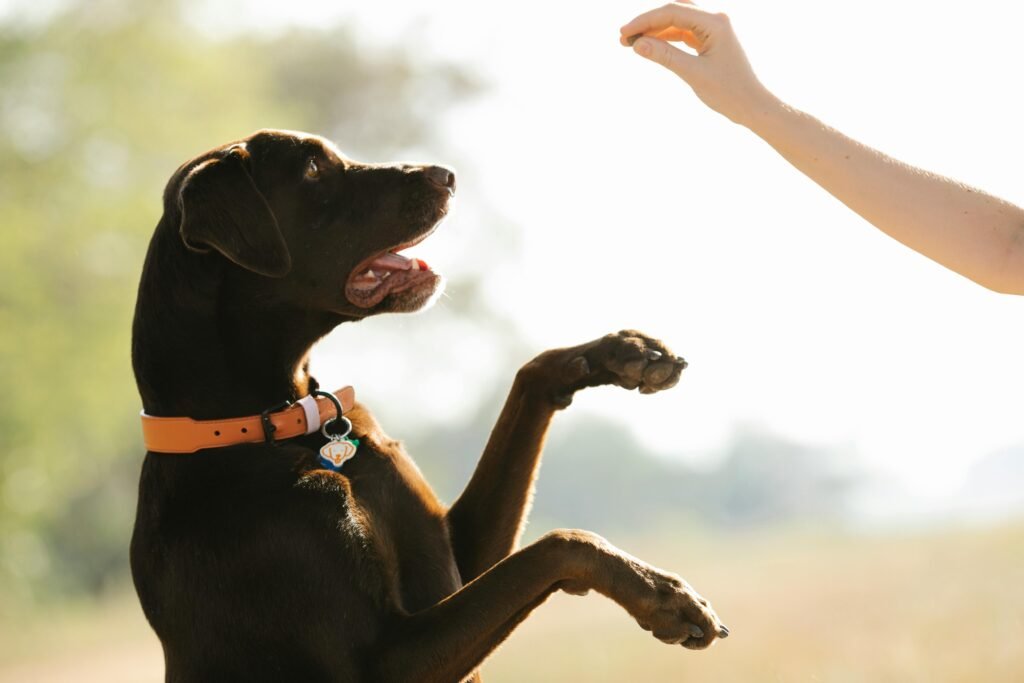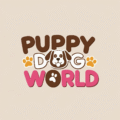
Introduction to Puppy Training
Training a puppy is a fundamental aspect of responsible pet ownership, playing a crucial role in ensuring a harmonious relationship between the dog and the owner. Proper training helps to instill good behavior, making life more enjoyable for both parties. The significance of training extends beyond basic obedience; it encompasses socialization, psychological stimulation, and the enhancement of the bond that is established from the very beginning. When a puppy undergoes effective training, it tends to grow into a well-mannered and balanced adult dog.
The principles underlying successful puppy training are relatively straightforward yet require commitment and consistency from the owner. One of the most essential guidelines is consistency. Establishing a set routine and sticking to it helps puppies understand what is expected of them. Using the same commands and cues consistently reinforces learning and minimizes confusion. In addition to consistency, positive reinforcement is a cornerstone of effective training. Rewarding desired behaviors with treats, praise, or playtime fosters a positive learning environment, encouraging puppies to repeat good behaviors. This approach not only aids in skill acquisition but also builds the puppy’s confidence, strengthening the bond between dog and owner.
It is vital to approach training with patience, as each puppy learns at its own pace. Rushing the process or expecting immediate results can lead to frustration for both the owner and the puppy, possibly hindering the training process. Consequently, understanding that mistakes will happen and celebrating progress, no matter how small, is part of effective puppy training. The combination of consistency, positive reinforcement, and patience lays the groundwork for the recommended products that assist in expediting the training experience and enhancing interaction between the owner and their puppy.
Training Treats: The Key to Positive Reinforcement
Training treats play a pivotal role in the process of educating your puppy. They are a fundamental tool in positive reinforcement strategies, which emphasize rewarding desirable behaviors. By providing your puppy with delectable rewards during training sessions, you can create a strong association between the behavior exhibited and the reward received. It is essential to select treats that are deemed ‘high value’ for your puppy, which typically means they are more appealing than your regular dog food. Options such as small pieces of cooked chicken, cheese, or specially formulated puppy treats can effectively capture your puppy’s attention and motivate them to learn.
To utilize training treats effectively, it is crucial to structure your training sessions appropriately. Start with short, engaging periods to maintain your puppy’s interest. During these sessions, promptly reward your puppy immediately after they perform the desired behavior. This immediacy helps reinforce their connection between the action and the reward. Over time, dogs can learn to respond to verbal commands or gestures without necessitating continuous treat reinforcement. Gradually reducing the frequency of treats while maintaining praise and affection can foster independent behaviors, allowing your puppy to thrive without the constant lure of food.
It is also advisable to consider the nutritional aspects of the treats used during training. Opting for healthy, low calorie treat options is beneficial in preventing overfeeding and ensuring your puppy maintains a balanced diet. Overindulgence in high calorie treats can lead to obesity and related health issues. By choosing treats wisely and moderating their use, you can effectively utilize training treats to enhance the training process while promoting your puppy’s overall health and well-being.
- Contains (6) 16 Ounce Boxes of Dog Biscuits for Puppies Under One Year
- With DHA, a natural omega-3 fatty acid that contributes to the development of the brain and nervous system
- Calcium and Vitamin D help support strong teeth and bones
- Contains one (1) 25-ounce container of Milk-Bone Soft & Chewy Chicken Recipe With Chicken Breast dog treats
- Soft and chewy dog treats made with real chicken breast
- Fortified with 12 vitamins and minerals
- Contains one (1) 36 ounce canister of mini dog biscuits in 3 tasty flavors: beef, chicken and bacon
- Tasty mini dog treats prepared with care and right-sized for treating more often
- Crunchy texture helps freshen breath and reduce tartar build-up, perfect for sloppy doggie kisses
Interactive Toys: Making Learning Fun
Interactive toys have become essential tools in training puppies, transforming the process into an engaging and enjoyable experience. These specially designed toys cater to a puppy’s instinctual need for play while simultaneously enhancing their learning and development. By incorporating problem-solving elements, interactive toys stimulate a puppy’s mind and encourage them to explore and think critically.
One popular type of interactive toy is the treat dispensing puzzle, which challenges a puppy to figure out how to retrieve treats hidden within the toy. This not only provides mental stimulation but also reinforces positive behaviors, as puppies learn to think independently to achieve their rewards. Another notable interactive toy is the training ball, which can be used to teach commands and reinforce obedience skills. By incorporating movement and play, these toys entice puppies to stay engaged and foster a stronger bond between them and the owner.
When introducing interactive toys into a puppy’s training routine, it is vital to set aside dedicated time for interactive play. This allows owners to actively participate in their puppy’s learning journey, providing guidance and positive reinforcement as the puppy navigates the challenges the toy presents. Start with simpler puzzles that gradually increase in difficulty, ensuring the puppy does not feel overwhelmed. Breaking the training into short, manageable sessions can also promote sustained interest and prevent feelings of frustration.
- Hide A Squirrel dog puzzle keeps pups engaged as they hunt squeaky squirrels from the tree trunk, fueling their instinct…
- 2-in-1 plush dog puzzle and squeaky dog toy combo that brings interactive hide-and-seek fun to playtime
- Keep your pup entertained and mentally sharp with plush squeaky squirrels that spark their natural hunting instincts and…
- 🐶 Plush Dog Squeaky Toys: This assortment value bundle plush pet toy contains 5 pack big woodland animals: Raccoon Squir…
- 🎁 No Stuffing Plush Toys: 100% stuffingless squeaky toys and no any hidden dangerous stuffing, it’s very safe for your p…
- 🐶 With Two Squeaky: These stuffless squeak doggie toys set have squeakers in both head and tail which will attract dog’s…
- 【Upgrade Dog Puzzle】Our dog puzzle toy is moderate level with more challenging ,difficult than level 2, not only easy sl…
- 【Dog Puzzle Toys for Smart Dogs】 The dog brain game toy is designed bigger size than other dog puzzle toys, multiple ste…
- 【 Mental Excecise & Boredom Buster】 Kinds of dogs and cats love the puzzle game of Spin & Slide and the Seek & Hide with…
Leashes and Harnesses: Tools for Controlled Training
When it comes to training a puppy, the right leashes and harnesses play a crucial role in ensuring a safe and effective learning experience. Selecting the appropriate equipment can significantly influence the outcome of training sessions, particularly when it comes to leash training and exposing your puppy to various social environments. Various styles of leashes and harnesses offer distinct advantages and disadvantages, making it essential for pet owners to understand their options.
Standard leashes are often the first choice for many puppy owners. They provide a straightforward means of control and can enhance communication between the owner and the puppy. A standard leash typically measures between four to six feet, allowing for a balance between freedom and restraint. However, while they offer stability, they may not accommodate all puppies’ behavioral tendencies, especially if they are prone to pulling.
Alternatively, retractable leashes allow for adjustable length, granting puppies more freedom to explore during walks. This can foster a greater sense of independence, aiding in overall socialization. However, they may also encourage undesirable behaviors such as pulling or excessive wandering, which can complicate training efforts. Owners utilizing retractable leashes must practice additional caution to ensure safety and control.
Harnesses provide another effective option, particularly for puppies that pull excessively on their collars. There are various types of harnesses, including front clip and back clip designs. Front clip harnesses can discourage pulling by redirecting the puppy’s movement, while back clip harnesses generally allow for a more comfortable experience for the dog. Regardless of the type, ensuring a proper fit is vital to maximize comfort and effectiveness.
- Perfect Fit: Sizing does NOT directly correspond to your pet’s breed or weight; Ensure the ideal fit by MEASURING your p…
- Comfort All Year: Made with a soft and breathable air mesh, this lightweight, fast drying harness ensures maximum comfor…
- Enhanced Visibility: Featuring two reflective bands, this harness increases your pet’s visibility during morning and eve…
- Perfect Fit: Sizing does NOT directly correspond to your pet’s breed or weight; Ensure the ideal fit by MEASURING your p…
- Comfort All Year: Made with a soft and breathable air mesh, this lightweight, fast drying harness ensures maximum comfor…
- Enhanced Visibility: Featuring two reflective bands, this harness increases your pet’s visibility during morning and eve…
- Small Dog Harness – Recommended Breeds: Small Dogs, such as Havanese, Corgi, Pug, Puggle, Terrier, etc. Please measure t…
- No Pull, No Choke – Our non-pulling dog harness is specially designed with 2 metal leash rings for safer dog walks. Use …
- Easy to Use – This hassle-free overhead harness is easy to put on and take off with its 2 fast-release buckles. Slide th…









